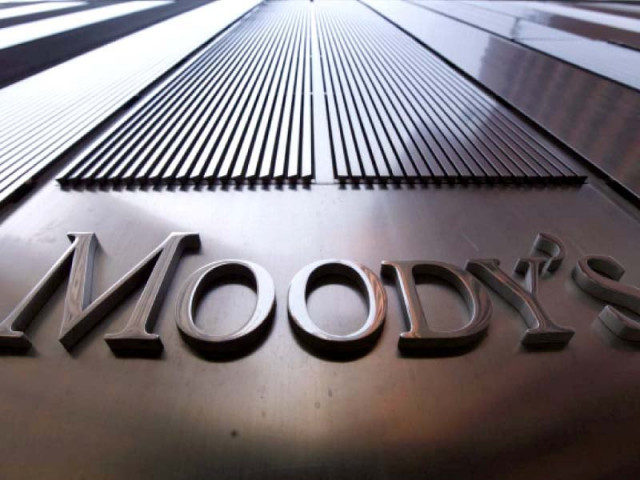Moody’s sees 1.5% GDP growth
Notes rebound in economic activities in Pakistan despite successive Covid waves

Moody’s Investors Service - the research arm of Moody’s credit rating agency - has projected a stable economic outlook for Pakistan with modest growth of 1.5% in the current fiscal year, which will accelerate to 4.4% in the next fiscal year.
It noted that economic activities had returned to the growth trajectory despite successive waves of Covid-19 in Pakistan. Economic activities have rebounded compared to the downturn recorded immediately after the emergence of the deadly virus in February last year in the country. However, the activities would remain low in the current fiscal year compared to pre-Covid levels, the research house said in a report on Wednesday.
It said the measures and initiatives taken by the government and the State Bank of Pakistan (SBP) to support economic and business activities and relief packages for households and industries in the wake of the pandemic put the macro economy back on growth track. Moody’s projected gross domestic product (GDP) growth of 1.5% for FY21, which was lower than the expansion of 1.5-2.5% anticipated by Pakistan’s central bank.
Pakistan’s GDP contracted 0.4% in the previous fiscal year due to a halt to economic activities with the imposition of a lockdown late in March - the end of third quarter of FY20.
Moody’s said economic activity would remain below pre-Covid levels for some time and vulnerable to successive waves of coronavirus infection, “even as confidence has gradually rebounded from low levels.”
Proactive policy responses will support Pakistan’s economy, which has low reliance on exports and limited trade and supply chain linkages. “Longer-term growth remains robust given supply-side enhancements due to increased power generation, improvements in national security and investment in transport and logistics,” it said.
“High frequency indicators suggest that economic activity has started to rebound…”
Moody’s said that perceived risks to Pakistan’s economy were lower than for similarly-rated peers. “Pakistan’s relatively closed economy has low reliance on exports and private capital inflows and limited trade and supply chain linkages. This reduces its exposure to weak global demand, including international tourism.”
The slow economic recovery will hurt government finances, while successive waves of coronavirus infection weigh on consumer spending and business confidence, all of which will affect the banking sector.
“We project a government deficit of 8% (compared to the government target of 7% of GDP) for 2021, with rising arrears and circular debt in the energy sector also affecting corporates’ repayment capabilities. Wide fiscal deficits, which will - to a large extent - be financed by local banks, may also take precedence over lending to the private sector. Lower consumer spending and business confidence will suppress lending growth and business opportunities.”
“The government and central bank policy responses and structural reforms will soften the pandemic’s impact but not fully offset it. In this environment, we expect private sector lending to grow modestly, by 5-7%, over the calendar year.”
The government’s economic measures in the wake of Covid-19 included a fiscal stimulus package of 2.8% of GDP or Rs1.2 trillion to support households (including daily-wage earners) and businesses including SMEs, agriculture, housing and construction sectors.
Similarly, the central bank also took measures to support the economy including aggressively slashing the benchmark interest rate by 625 basis points during March-June 2020 to 7%, offering concessionary financing to new and existing businesses, offering cheaper loans to businesses to pay salaries to their staff, subsidised loans for housing and construction, deferring and rescheduling loans for corporates and individuals for one year.
Banking outlook
The research house also assigned a stable outlook to banking operations in Pakistan. Banks have ample liquidity in the system to finance public and private sector projects, as deposits have continued to grow.
However, the banks may see a surge in default on repayment by corporates and households due to economic hardships amid the pandemic. Similarly, profit margins of banks may come under pressure.
“Non-performing loans (NPLs) will rise, primarily as a result of subdued economic growth. Loan repayment holidays and other support measures will limit the deterioration, but will not fully eliminate the risks. Loan performance will also be pressured by banks’ troubled foreign operations,” Moody’s said.
“Profitability will face pressure from higher loan-loss provisioning requirements, muted revenue growth and a squeeze in net interest margins following a cumulative 625bps cut in interest rates in 2020.”
“The government remains committed to supporting troubled banks and avoiding the risk of depositor losses. Its capacity to support, however, is constrained, as reflected by its B3 rating level.”
Published in The Express Tribune, January 14th, 2021.
Like Business on Facebook, follow @TribuneBiz on Twitter to stay informed and join in the conversation.


















COMMENTS
Comments are moderated and generally will be posted if they are on-topic and not abusive.
For more information, please see our Comments FAQ